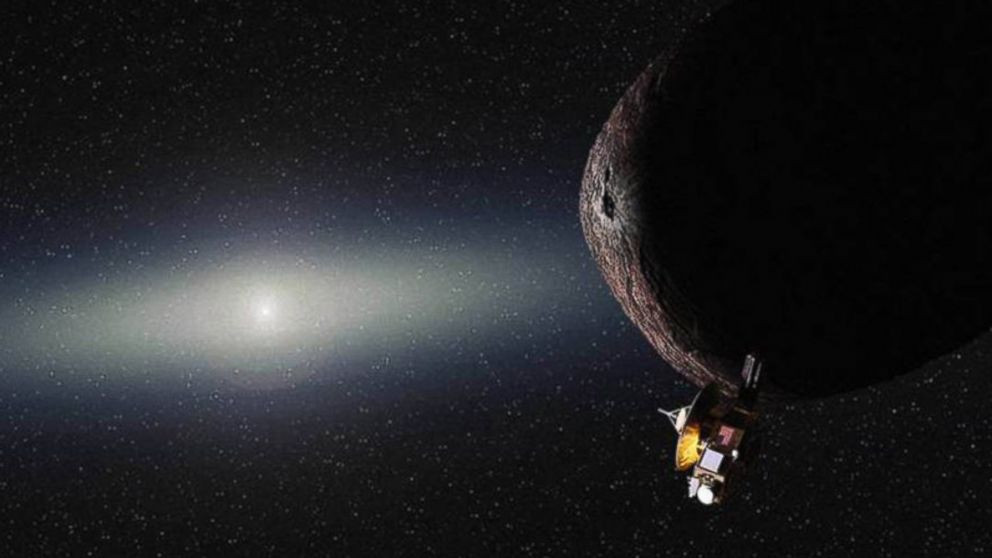New Horizons Probe Gets Its Next Flyby Target After Pluto
After historic encounter with Pluto, NASA picks next target for New Horizons.

— -- New Horizons has passed Pluto but the space probe's work isn't done yet.
NASA has selected a potential new target for New Horizons to fly past located nearly one billion miles beyond the dwarf planet in the Kuiper Belt, an area beyond Pluto's orbit of the Sun that is the largest structure in the planetary system, with more than 100,000 miniature worlds ripe for exploration.
Before New Horizons reaches the Kuiper Belt object, known as 2014 MU69, a proposal will have to be evaluated by an independent team of experts before the flyby is officially approved.
"While discussions whether to approve this extended mission will take place in the larger context of the planetary science portfolio, we expect it to be much less expensive than the prime mission while still providing new and exciting science," John Grunsfeld, chief of NASA's Science Mission Directorate, said in a statement.
The object was chosen in part for its location. It will cost less fuel to reach it than other candidates, leaving more fuel for New Horizons to conduct other science opportunities.
New Horizons conserved energy by taking naps on its 3 billion mile journey to Pluto. The spacecraft may have enough power for two more decades of exploration, according to NASA.
The piano-sized probe is equipped with a battery that converts radiation from decaying plutonium into electricity. New Horizons loses about a few watts of power each year, according to NASA, but is estimated to have as much as 20 years left in its life expectancy.
It will spend the next year and few months transmitting data from back to Earth from its July 14 encounter with Pluto, with the information being categorized by low, medium and high priority. It will likely make its last transmission in October or November of next year, officials said.
Launched in January 2006 on a 3 billion mile journey to Pluto, New Horizons "phoned home" after its Pluto flyby, indicating that it had successfully navigated just 7,700 miles from the dwarf planet. It later sent back the first high-resolution images of Pluto's surface.




